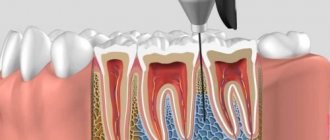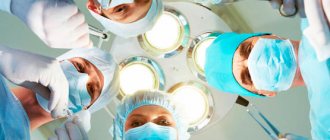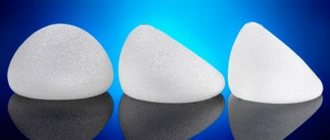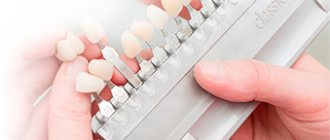Chief editor of the site:
Snitkovsky Arkady Alexandrovich
Chief physician of the professorial dentistry “22 Century”, dentist, orthopedic dentist
Author of the article:
Scientific team of dentistry “22 Century”
Dentists, candidates and doctors of medical sciences, professors
Dental treatment under general anesthesia
Panic fear, a strong gag reflex, allergic reactions to anesthetics and many other conditions are indications for the use of general anesthesia during dental procedures. The patient’s condition after such an intervention is somewhat different from his normal state of health, and this article is devoted to how to behave for the first time after treatment under anesthesia or drug sedation in dentistry .
Indications for general anesthesia
Under general anesthesia in dental practice, it is possible to eliminate almost all problems that arise in the oral cavity - from simple dental caries to complex maxillofacial operations. The patient seeks this type of help, most often, not because of pain, but because of severe fear or medical conditions that interfere with the doctor’s work (allergies, gag reflex, mental illness, etc.). More information about the types of anesthesiological support and how treatment is carried out with switched off consciousness can be found on our website. Here we will talk about the process of postoperative restoration of the patient’s activity , depending on the method of pain relief and the medications administered.
Epidural anesthesia
Many operations take place while the patient is conscious. For example, operations on the lower extremities, genitals, hernias, and many others. Mainly due to the use of various types of spinal anesthesia, mainly epidural block. In this case, for pain relief you will need several milliliters of the drug, which are injected into the epidural space running along the spinal column. But for several hours, the absence of sensitivity below the level of the catheter is guaranteed.
Childbirth is increasingly taking place under epidural anesthesia. But we must remember that it is not recommended in cases of weak labor, when contractions, on the contrary, have to be stimulated. As for the situation when childbirth proceeds normally, data from many years of research indicate that epidural anesthesia during childbirth is safe and effective.
Today, many people prefer to undergo unpleasant examinations under general anesthesia - gastro- and colonoscopy, various biopsies and punctures. This is really a solution for those who are very afraid of even a little pain and do not want to experience painful minutes. The main thing is that the procedure is carried out under the supervision of an anesthesiologist, who accurately calculates the dosage of the drug and turns off consciousness to the minute. He monitors the patient's breathing and, if necessary, adds a little medicine. If these rules are strictly followed, studies under intravenous general anesthesia are absolutely safe.
How long does it take to recover from anesthesia?
Time to recover from anesthesia
The time to recover from anesthesia after surgery or after caries treatment differs, although not significantly. This is usually 15-30 minutes from the end of medical procedures to the moment when the patient fully regains consciousness and is able to think clearly, talk and walk. This is explained by the fact that the introduction of modern drugs for general analgesia is very effective and their effect can be stopped very quickly. These substances are also quickly eliminated from the body. Of course, the speed at which the body regains consciousness depends both on the patient’s age, his sensations, his somatic diseases, and on the stage of treatment, the period of his stay in medicated sleep, and the method of administering medications. But in any case, the time after anesthesia in dentistry is very short and the patient leaves the clinic on the same day.
Rehabilitation after surgery. Choosing the right diet
Surgery is a great stress for the body, both psychological and physiological. The body's response to a traumatic impact, which in fact is an operation, the neuroendocrine mobilization of protective forces as a reaction to a threatening situation, as well as adaptation to the changed operating conditions of the operated organs - all this requires significant energy expenditure. In the postoperative period, the breakdown of proteins from which new connective tissue is built increases, carbohydrates, vitamins and micro- and macroelements are intensively consumed. Due to the deterioration of the gastrointestinal tract after surgery, and in particular, the slowdown in normal absorption, there is a high risk of protein-energy malnutrition.
That is why nutritious, balanced, and, importantly, easily digestible nutrition is necessarily included in the postoperative rehabilitation program. Unfortunately, often specialists, when fighting an immediate threat to the body, forget about creating conditions to ensure regeneration processes and restore full functioning.
The severity of the disease and the extent of surgical intervention are not the only factors influencing the duration of rehabilitation and the prognosis of recovery. The individual characteristics of each person, his gender, age, bad habits, a set of chronic diseases, general physical and psychological condition must be taken into account not only to develop a rehabilitation treatment program, but also to select the optimal diet. Only nutrition provides access to energy for normal metabolism and building material for new tissues.
The optimal diet after surgery should:
- replenish protein-energy deficiency;
- stimulate the immune system and reduce the risk of postoperative complications, exacerbation of chronic diseases or the addition of hospital infections;
- contribute to the restoration of the patient’s physical activity.
Specialized mixtures from Nestle were created taking into account the pathophysiology of post-surgical processes and the nutritional needs of weakened patients:
- Impact®Oral is an immunostimulating nutrition with proven effectiveness in reducing postoperative rehabilitation time, length of hospital stay, and reducing the risk of postoperative complications;
- Resource®Diabet Plus and Resource 2.0 + Fiber – ready-to-eat, high-protein, high-calorie nutrition for intensive recovery;
- Peptamen® and Peptamen®Junior – nutrition based on hydrolyzed whey protein with a fast energy component in the form of medium chain triglycerides (up to 70% fat component). All components of the mixture are guaranteed to be absorbed by the body even with a damaged gastrointestinal tract;
- Resource Optimum is a balanced diet often prescribed to support recovery after hospital discharge. This is a dry mixture based on milk proteins (50% whey protein and 50% casein).
Impact®Oral
Impact®Oral immunonutrition is indicated for adults and children from 7 years of age before and/or after operations on the gastrointestinal tract, head, neck and other organs and systems.
Arginine-enriched milk protein serves as an excellent material for tissue regeneration.
The immunostimulating effect of nutrition, proven in randomized studies involving more than 2,000 patients in “major” abdominal surgery, is due to the presence of arginine, omega-3 fatty acids and nucleotides in the product in a certain ratio.
Impact®Oral contains medium chain triglycerides (22% of the total fat component) as a quick source of energy for recovery and dietary fiber, which improves the functioning of the digestive system and boosts gut immunity.
Taking the mixture for 5-7 days as an additional or sole source of nutrition allows you to normalize metabolism, immunity, and correct general clinical indicators. After surgery, Impact®Oral is also used for 5-7 days as additional nutrition, 2-3 sachets per day, as a sole source of food, 5 sachets per day. The mixture helps to quickly restore strength, physical fitness and return to normal life.
Resource®Diabet Plus
The product is intended for patients with diabetes mellitus or impaired glucose tolerance, in particular those who have undergone surgery.
The finished mixture, contained in a 200 ml bottle, has enough calories (320 kcal) to combat hunger and provide energy to the body, but at the same time has a low glycemic index and has a beneficial effect on the glycemic and fat profile. The carbohydrate component consists of 90% “slow” carbohydrates and isomaltulose. A high concentration of protein (a mixture of whey and casein proteins) - 18 g per bottle - completely covers the needs of the recovering body in amino acids, consumables for the creation of cellular structures. Dietary fiber Prebio1+ and PHGG (partially hydrolyzed guar gum) normalize the digestive tract and have a beneficial effect on the glycemic profile.
The mixture is intended for oral administration in small sips or through a straw. One bottle replaces a full meal in terms of nutritional composition. Resource®Diabet Plus can be used as a dietary supplement or as the sole source of nutrition. Can be used for feeding through a feeding tube or stoma.
Peptamen®
Patients who have undergone major operations and who experience severe exhaustion in the postoperative period require more intensive nutrition to ensure the absorption of nutrients. In such cases, the product Peptamen® is recommended. Even with a significantly reduced intestinal absorption capacity and a damaged intestinal wall, the components of the Peptamen mixture are well absorbed by the body, supplying the body with the necessary amount of proteins, fats, carbohydrates, vitamins and microelements.
Hydrolyzed whey protein covers 12% of energy costs and reduces the risk of reflux and diarrhea. Medium chain triglycerides, which make up 70% of Peptamen's fat profile, are a readily available source of energy and reduce the risk of fat malabsorption. Cysteine, Omega-3 fatty acids and a balanced ratio of ARA (arachidonic acid) and DHA (docosahexaenoic acid) help control inflammatory reactions and accelerate regeneration processes.
Peptamen®Junior
Peptamen®Junior therapeutic food is recommended for use in pediatrics. Complete semi-elementary nutrition based on hydrolyzed whey protein is suitable for children from one to 10 years of age. The product is suitable for young patients with digestive system disorders and intolerance to standard formulas, in particular those based on casein.
In addition to hydrolyzed whey protein, Peptamen Junior, like Peptamen for adults, contains medium chain triglycerides (MCT) - 55% of the fat profile, vitamins and minerals, which successfully provide the body with energy for rapid recovery. Since Peptamen®Junior is a dry mixture for preparing a drink, its concentration can be adapted individually to the needs of the baby and used as an additional or sole source of nutrition.
Rule two. Follow the anesthesiologist's recommendations
The anesthesiologist must talk to you the day before if you are undergoing elective surgery. Tell us in detail about all the problems that bother you and how you endured anesthesia before.
Take seriously the regimen that you will be advised to follow before the operation - do not smoke, do not drink liquids. It is prescribed to prevent complications and extreme situations.
Article on the topic
Advice from an anesthesiologist: Which anesthesia is safer?
If you are prescribed any medications the night before or the morning before surgery, do not ignore this order. As a rule, strong sleeping pills are prescribed before surgery, which already represent the first stage of anesthesia. They will ensure that you get a deep, relaxing sleep before surgery and that other painkillers work properly.
Rule one. You shouldn't endure pain just to avoid anesthesia.
Almost any manipulation associated with causing severe pain is more harmful to the body than anesthesia. Therefore, in the civilized world they adhere to this point of view: where it is possible to relieve a patient of pain, this is certainly done. Modern medicine has very wide possibilities for this.
In addition, anesthesia with the use of artificial respiration devices significantly expands the capabilities of surgeons and allows them to provide assistance to those patients who cannot be helped with other types of surgical intervention. Of course, all contraindications of the patient, his age, and body capabilities are taken into account.
Anesthesia in dentistry
And one more question that interests many: is it worth agreeing to general anesthesia when installing dental implants? In fact, in this case there is no choice. After all, if we are talking about installing 1-2 implants, you can really get by with local anesthesia, but when a dentist does half of the jaw at a time, then working without anesthesia will turn into real torture for both the doctor and the patient. Considering these facts and the safety of modern anesthesiology, most patients agree with the doctor’s proposal and prefer to wake up with a finished result.










